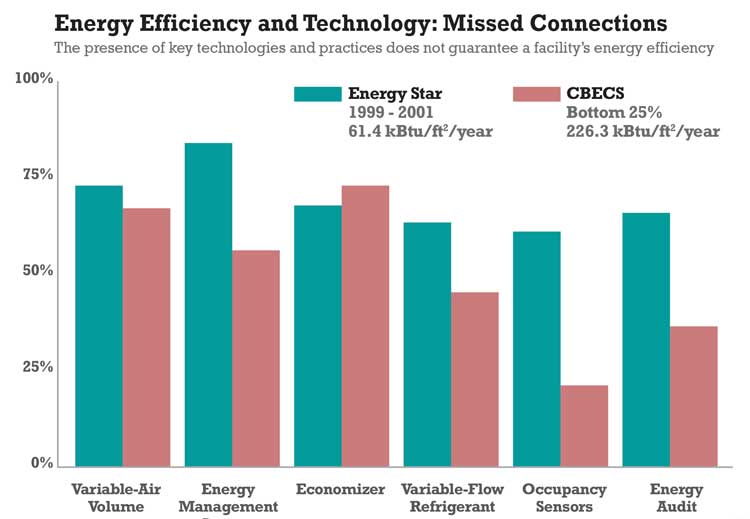EPA Statistics Debunk Energy Efficiency Myth
Part 2 of a 3-part article on building re-tuning
The U.S. Environmental Protection Agency (EPA) reviewed data on energy performance from Energy Star buildings and compared those numbers to the bottom 25 percent of buildings represented in the Commercial Buildings Energy Consumption (CBEC) survey. The agency found that the presence of various technologies — including variable air volume systems, energy management systems, and variable-frequency drives — was not a guarantee of energy-efficient performance. See the accompanying chart.

The EPA also reviewed the Energy Star scores of 4,000 facilities in comparison with their ages. Newer buildings should be more efficient, right? Actually, no. Facility age is not an accurate predictor of efficiency, according to the EPA. Among the review’s findings:
- • �39 percent of buildings with a rating of 75 or better were less than 25 years old.
- • �42 percent of buildings with a rating of 25-74 were less than 25 years old.
- • �35 percent of buildings with a rating of less than 25 were less than 25 years old.
So achieving good performance is not necessarily about having the latest, greatest systems and technology. It’s not solely about capital-intensive measures. Good performance also is not about having a newer building rather than an older one. The real opportunities lie in the way managers and their staffs operate and maintain facilities every day.
So how can managers improve operations? More importantly, how can they make it a part of what they do every day, rather than just a one-time event? Enter building re-tuning.
Related Topics:















